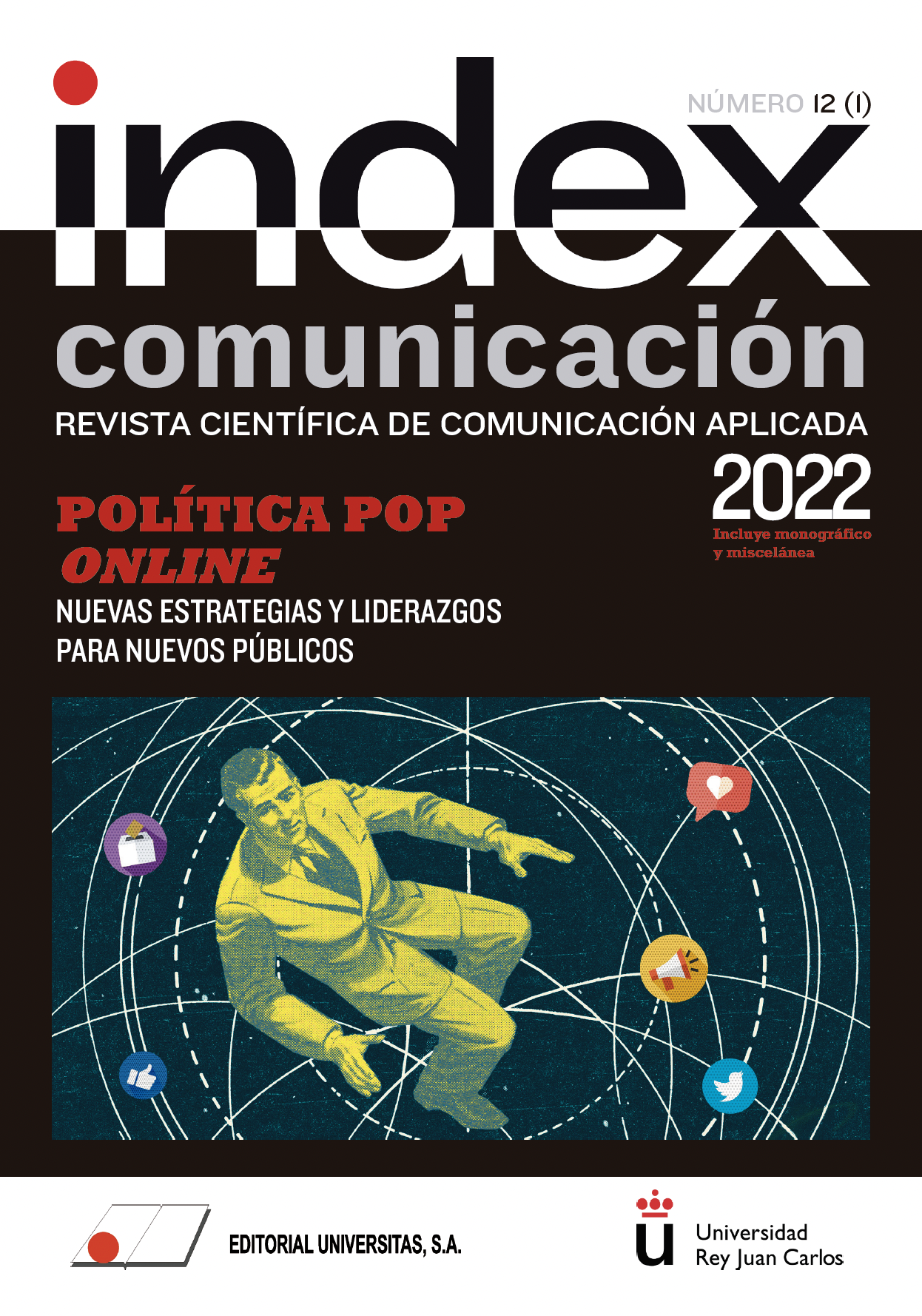The Political Show in 'El Hormiguero 3.0' with Presidential Candidates for Government: 2015-2019
DOI:
https://doi.org/10.33732/ixc/12/01ElespeKeywords:
El Hormiguero, Bells, Elections, Politicians, Television, ShowAbstract
The infotainment is a key piece for political communication and the candidates tour the television sets showing their communication skills. Television entertainment programs such as Antena 3's El Hormiguero have taken advantage of this situation to develop a series of electoral interviews with the candidates for the presidency of the Government of Spain. This arti-cle will analyze these programs that have been broadcast during the electoral campaigns held between 2015 and 2019, both from their content and their structure. To carry out this research, the models framed in the quantitative paradigm have been used, focusing on descriptive questions from the content analysis adding the qualitative study of them. The programs that have been carried out in the electoral periods have maintained an identical structure in the interviews broadcast in each campaign prior to the elections so that all candidates were on an equal footing on issues related to current hot topics.
Metrics
References
BERROCAL, S., ABAD, L., PEDREIRA, E. y CEBRIÁN, E. (2001). La imagen de los parti-dos políticos en El Informal, CQC y Las Noticias del Guiñol en las elecciones legislativas de 2001. Zer: Revista de estudios de comunicación, (11).
CABO, N. (2019, 10 de octubre). Pablo Motos y su buen trato a los líderes de la derecha en 'El Hormiguero'. El Plural. https://bit.ly/3jmKrkF
CASERO-RIPOLLÉS, A., ORTELLS-BADENES, S. y ROSIQUE CEDILLO, G. (1999). Conse-cuencias democráticas de la disolución de las fronteras entre información, entretenimiento y privacidad en la era digital. TELOS, (14), 45-54.
CIS (2019). Barómetro diciembre. https://bit.ly/3lZ3gMY
IGLESIAS, P. (2020, 8 de julio). Iglesias cree que hay que "naturalizar" que los periodistas estén sometidos a la crítica y los insultos. La Sexta. https://bit.ly/2Vudk6n
MARTÍN, V. y BERROCAL, S. (2017). Innovación y consolidación del infoentrete-nimiento político: una perspectiva histórica. Historia y Comunicación Social, (207), 207-219. doi.org/10.5209/HICS.55908
MUCIENTES, E. (2019, 11 de abril). El Hormiguero: Pablo Casado suda la gota gor-da con Pablo Motos. El Mundo. https://bit.ly/3jDH3SP
NEWTRALL (2021). Es falso que Inditex haya pagado “cero euros” en el Impues-to de Sociedades en 2019 como dice Matute (EH Bildu). https://bit.ly/3iqAKCE
PRIOR, H. (2014). La espectacularización de la política. Más poder local, (20), 12.
REDONDO GARCÍA, M., VENTURA MENEU, M. y BERROCAL GONZALO, S. (2020). Nue-vos roles del líder político en programas televisivos de infoentretenimiento.
Doxa Comunicación, (30), 37-53. doi.org/10.31921/doxacom.n30a2
SARTORI, G. (2003). Videopolítica: medios, información y democracia de son-deos. Fondo de Cultura.
STROMBÄCK, J. (2010). Mediatization of politics: Towards a conceptual frame-work for comparative research. En E. P. Bucy y R. L. Holbert (Eds.), Source-book for Political Communication Research (pp. 367-382). Routledge.
Published
How to Cite
Issue
Section
License
Copyright (c) 2021 Manuel Antonio Pacheco Barrio

This work is licensed under a Creative Commons Attribution-NonCommercial 4.0 International License.
Authors who submit to this journal agree to the following terms:
Authors retain copyright and ensure the magazine's right to be the first publication of the work as licensed under a Creative Commons Attribution-NoComercial 4.0 International License that allows others to share the work with an acknowledgment of authorship of the work and the initial publication in this magazine, with no commercial purpose.
Authors can establish separate additional agreements for non-exclusive distribution of the version of the work published in the magazine (for example, to an institutional repository or publish it in a book), with an acknowledgment of its initial publication in this journal.
It allows and authors are encouraged to disseminate their work electronically (eg, in institutional repositories or on their own website) prior to and during the submission process, as it can lead to productive exchanges, as well as a citation more early and most of the published work (See The Effect of Open Access).















